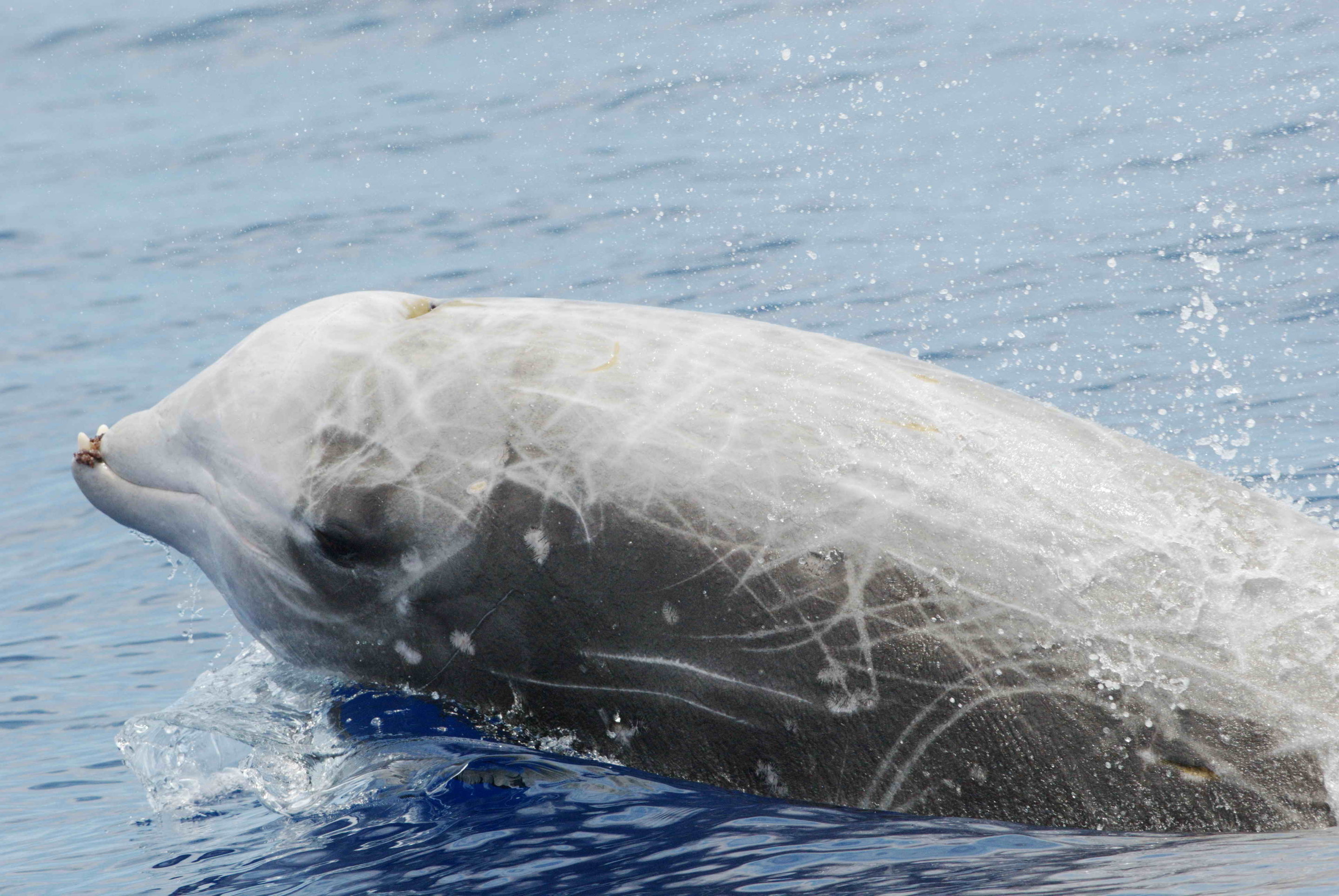Taxonomic Classification and Evolutionary History

Spade-toothed beaked whales (Mesoplodon traversii) belong to the order Cetacea, which includes all whales, dolphins, and porpoises. Within this order, they are classified in the family Ziphiidae, known as beaked whales. The genus Mesoplodon encompasses 15 species of beaked whales, including the spade-toothed beaked whale.
Evolutionary Relationships
Spade-toothed beaked whales are closely related to other species in the Mesoplodon genus, sharing similar physical characteristics and genetic makeup. They are also closely related to other beaked whale species, such as Blainville’s beaked whale (Mesoplodon densirostris) and True’s beaked whale (Mesoplodon mirus). These species share a common ancestor that lived approximately 5-10 million years ago.
Evolutionary Timeline, Spade toothed beaked whales
The evolutionary history of spade-toothed beaked whales is not fully understood, but it is believed that they diverged from other beaked whale species around 2-3 million years ago. They likely evolved from a common ancestor that inhabited deep-sea environments, adapting to the challenges of diving and foraging for prey at great depths.
Over time, spade-toothed beaked whales developed distinctive features, such as their spade-shaped teeth and unique vocalizations, which aid in communication and echolocation. They have also evolved adaptations for deep diving, including increased lung capacity and a specialized circulatory system that allows them to withstand extreme pressure changes.
Physical Characteristics and Adaptations: Spade Toothed Beaked Whales

Spade-toothed beaked whales are fascinating creatures with distinctive physical characteristics and remarkable adaptations that enable them to thrive in their deep-sea habitat. These elusive whales have evolved over millions of years to navigate the extreme conditions and hunt effectively in the dark depths of the ocean.
Spade-toothed beaked whales possess a sleek, streamlined body that helps them move swiftly through the water. Their coloration is typically dark gray or black on the back, fading to a lighter shade on the belly, providing camouflage in the dim ocean environment. Their most striking feature is their spade-shaped teeth, which are unique among beaked whales and serve a specific purpose in their feeding behavior.
These whales have evolved exceptional adaptations to withstand the immense pressure and darkness of the deep sea. Their bodies are highly flexible, allowing them to withstand the pressure changes encountered during deep dives. Their bones are dense and compact, providing structural support against the crushing force of the water. Additionally, spade-toothed beaked whales have a thick layer of blubber that insulates them against the cold temperatures of their habitat.
Echolocation is a crucial adaptation for spade-toothed beaked whales, enabling them to navigate and hunt in the dark depths of the ocean. They emit high-pitched clicks through a specialized organ in their forehead, creating sound waves that bounce off objects and return to their ears. By analyzing the echoes, these whales can create a mental map of their surroundings and locate prey.
Echolocation in Hunting and Navigation
Spade-toothed beaked whales use echolocation for both hunting and navigation. They emit a series of rapid clicks to create a sound beam that they direct towards potential prey. When the sound waves bounce off an object, the whale can determine the distance, size, and direction of the object. This information helps them locate and track their prey, even in the darkness of the deep sea.
In addition to hunting, spade-toothed beaked whales also use echolocation to navigate their environment. By emitting clicks and listening for the echoes, they can create a mental map of their surroundings and avoid obstacles. This is particularly important in the deep sea, where visibility is limited and the terrain can be complex.
You know those spade toothed beaked whales? They’re pretty cool, right? Well, I was reading about them the other day and I came across this interesting fact: they’re often found in the same areas as Juan Fernando Quintero. Now, I know what you’re thinking: “What the heck is Juan Fernando Quintero?” Well, he’s a Colombian soccer player.
But what does he have to do with whales? I don’t know, but it’s still a fun fact.
Spade toothed beaked whales, known for their unique teeth, are fascinating creatures. They’ve adapted to deep-sea environments, much like the intense competition in the hr derby. In this HR competition, candidates battle it out to secure the best job opportunities.
Just as spade toothed beaked whales navigate the depths of the ocean, HR professionals navigate the complexities of the job market.